
Rediscovering Japan

Rediscovering Japan
Travel (Aizu Part 1 (Kitakata, Higashiyama Onsen))

by tomizuta
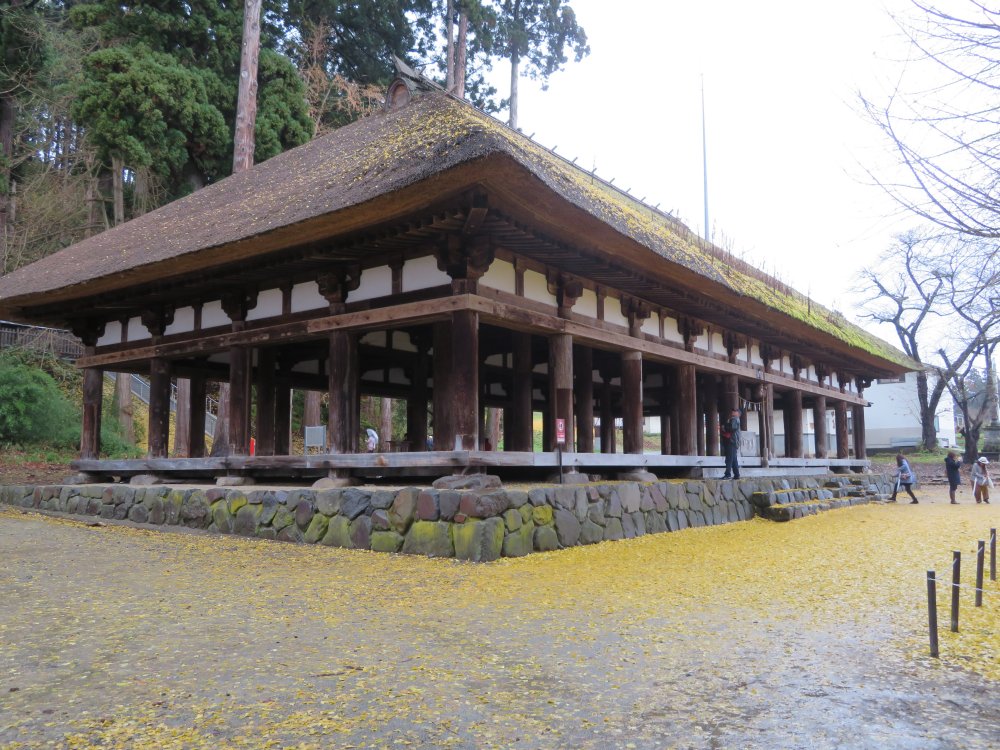
The Shinguu Kumano Shrine is famous for its unique large rectangular praying area (nagatoko).
The Aizu area in western Fukushima Prefecture is a must place to visit for Japanese history fans. It has been featured in many films including the yearly NHK Taiga drama series. The NHK Taiga drama in 2013 was “The cherry blossoms of Yae (Yae no sakura)” depicting the exciting life of a lady, Yae from the Aizu area. At the end of the Edo era, the Aizu fiefdom was loyal to the Tokugawa shogunate and became the last battleground between the supporters of the Restoration (who wished to return the rule from the Shougun to the Emperor) and the Tokugawa supporters. Aizu fought heroically for weeks until finally surrendering to the much larger and powerful anti-shogunate army on November 6th 1868. Yae, disguised as a man fought till the end. The surviving samurais were branded as those fighting against the Emperor and shunned by the Meiji Government run by mostly Satsuma (Kagoshima) and Choushuu (Yamaguchi) ex-samurais. I had visited Aizu about ten years ago, but only briefly. I thought of visiting Aizu again at least to support the recovery efforts of Fukushima after the Tohoku earthquake, tsunami and Fukushima nuclear disaster in 2011.
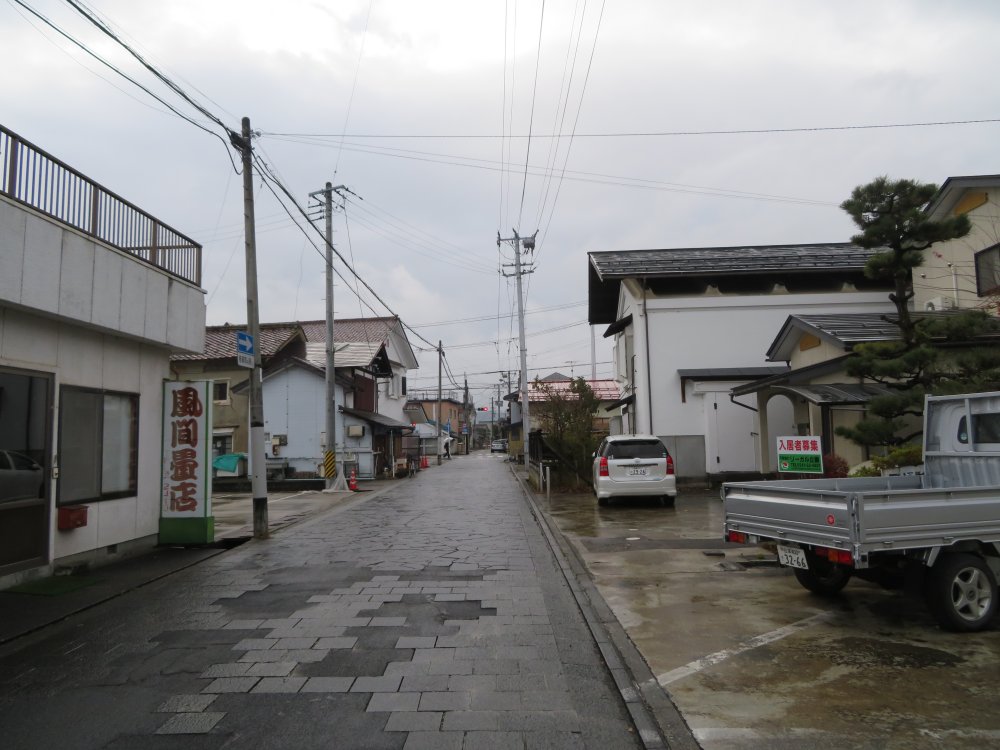
Kura style buildings are everywhere. Note the two storage style buildings on both sides.
It is a four hour drive to Aizu from the Tokyo area. In late September
2017, we started shortly after eight in the morning and arrived shortly
after noon in Kitakata City approximately twenty kilometers north of Aizu
Wakamatsu, the center of the Aizu area. Kitakata developed in the Edo era
as a distribution point of local goods. It is also on the former Yonezawa
kaidou (major road) linking two major towns of Aizu-wakamatsu and Yonezawa
in Yamagata Prefecture. Kitakata is famous for its ramen noodles and numerous
storage vaults (kura). I tried Kitakata ramen for lunch, but must say that
it did not match my taste. If you fancy ramen with thick soup, I would
recommend you try some other food. The gyoza (dumpling) at the ramen restaurant
was good.
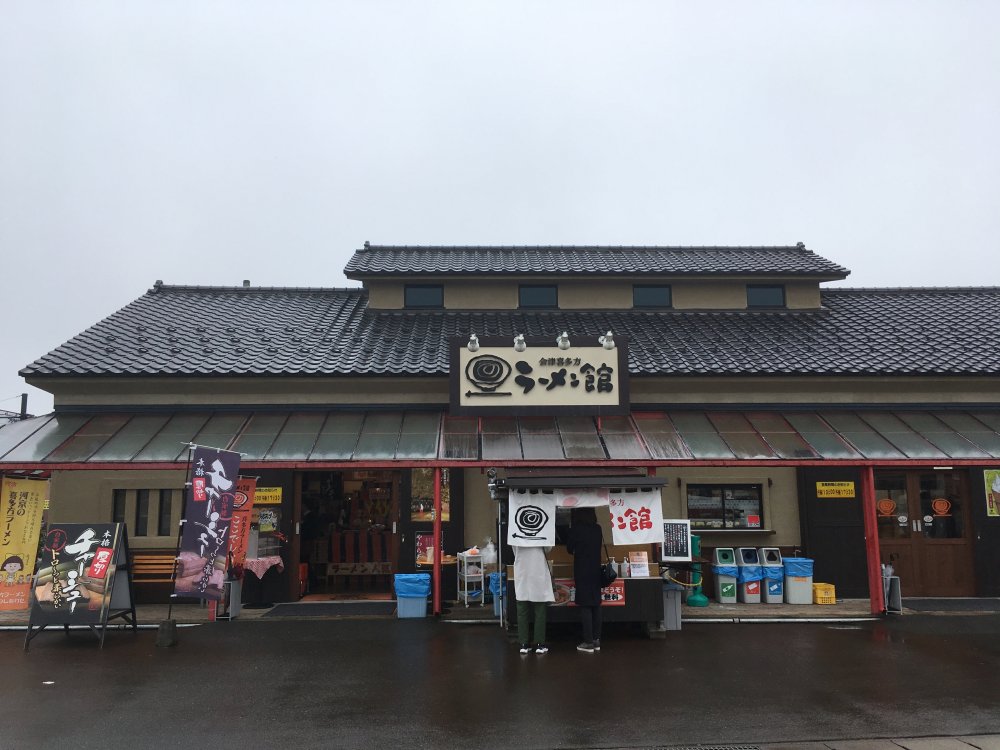
I tried Kitakata Ramen noodles at a restaurant adjacent to the Ramen Manor (Ramenkan).
I next visited Kura no sato (Kura village). This is an open air museum displaying various types of Kura buildings, relocated to this site. There are rice storage vaults, sake brewery, private residence and merchant shop to name a few, all in a Kura style. I got to appreciate that Kura is not just for storage but more a building style resembling a storage vault. I recommend you visit this place before you explore the city area to better appreciate the city of Kura. You should also understand that there were thousands of Kura style buildings in Kitakata. This was due to the fact that Kitakata developed as a distribution point but also the recognition of its resilience to fire following the fire in 1880. One local photographer saddened by the loss of many historic buildings to modern development after World War II exhibited his collection of Kura pictures in Tokyo introducing Kitakata’s Kura heritage. Following this NHK ran a film introducing Kitakata as the city of Kuras giving the city national recognition. Kitakata became a tourist’s attraction and the promotion of ramen was another effort that followed to increase its popularity.
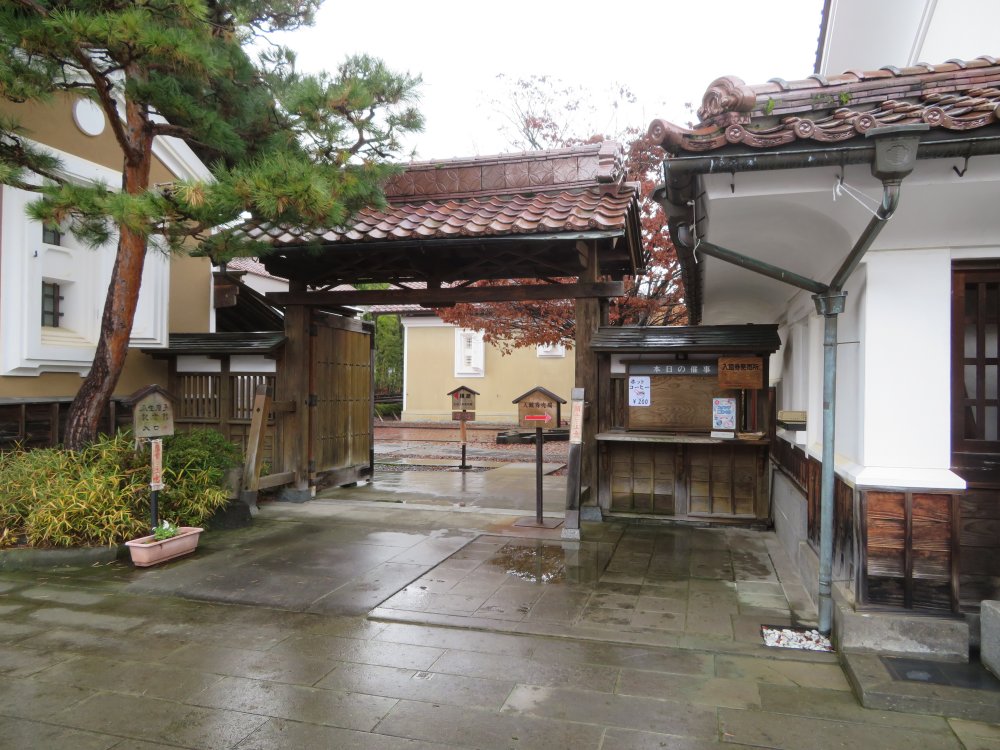
The entrance to Kura no sato. Various types of Kura style buildings have been relocated to this site.
We then visited one of the three sake breweries in the city. This was an old brewery established in the late eighteenth century. They have moved their brewery to outside the city center and the old brewery has now become a shop with a museum displaying sake brewing tools. I purchased a seven hundred twenty milliliter bottle of Yauemon taken from the name of the current owner of the brewery. You can also try their sake at the shop. Unfortunately I could not as I was driving. In the vicinity there are numerous Kura type buildings which helps you understand how many Kura style buildings Kitakata still retains.
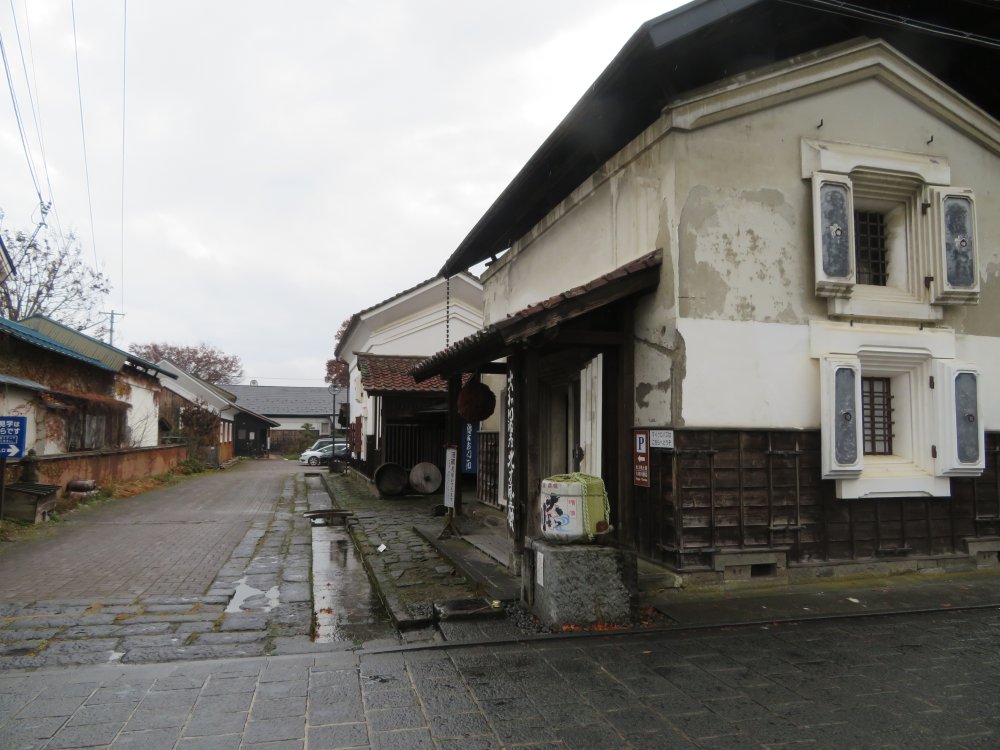
The sake brewery of Yamatogawa. The brewery was established in the late eighteenth century.
Our next visit was to Shinguu Kumano Shrine. The history of the shrine can be traced back to the twelfth century when the local feudal lord invited the three sacred shrines of Kumano to this site. Upon approaching the shrine from the main torii gate I was amazed at the resemblance of its background to the Kumano area in Wakayama. No wonder that our ancestors invited the three Kumano shrines to this place.

I was amazed at the resemblance of its background to the Kumano area in Wakayama.
The shrine is famous for its unique large rectangular praying area (nagatoko).
This also comes from around the twelfth century and was refurbished to
its original state in the 1970s. As our visit was in November we noticed
a family bringing their children to pray for their well-being (Shichigosan).
You also ought to visit the treasury adjacent to the shrine to view their
collection of Buddhist statues and other objects. The admission fee to
the shrine including the treasury is only three hundred yen, and certainly
worth contributing.
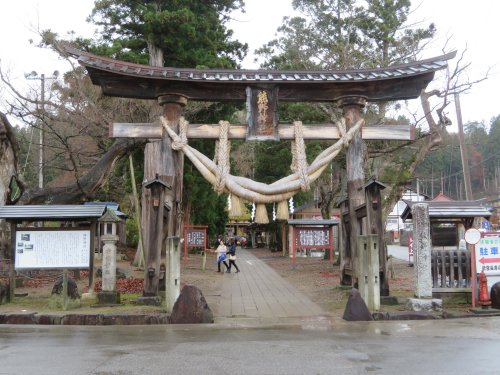
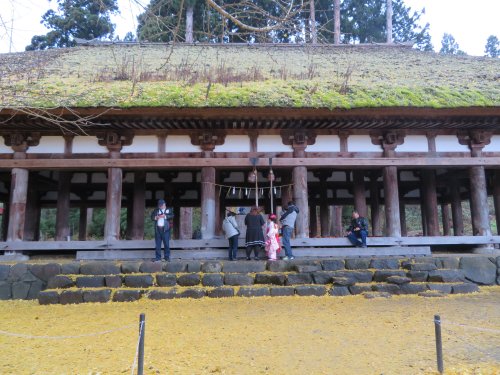
The grand entrance gate of Shinguu Kumano Shrine (left) and a family brings their daughters to the nagatoko to celebrate shichigosan (right).
We left Kitakata for our ryokan in Higashiyama Onsen close to Aizu-wakamatsu. The weather forecast was right and the drizzle was now turning to snow. On the way to the ryokan, we paid a visit to Fukushima Prefectural Museum as we thought it would be useful to increase our background knowledge of Aizu. We were a bit disappointed as the exhibits are quite general, perhaps good for school visits, covers all of Fukushima so not that focused on Aizu. It was already getting dark by the time we reached Higashiyama Onsen at five pm. Driving through the onsen district, I couldn’t help but notice the fewer lights in the onsen area compared with our last visit. The following morning I found out why. There were ryokans that collapsed and not reopened after the catastrophe in 2011. We were saddened to learn that the catastrophe had sped up the closures of smaller and older ryokans. The number of visitors has fallen since the catastrophe. There was a spike in 2013 helped by the airing of Yae-no-sakura but that did not last long, we were told.
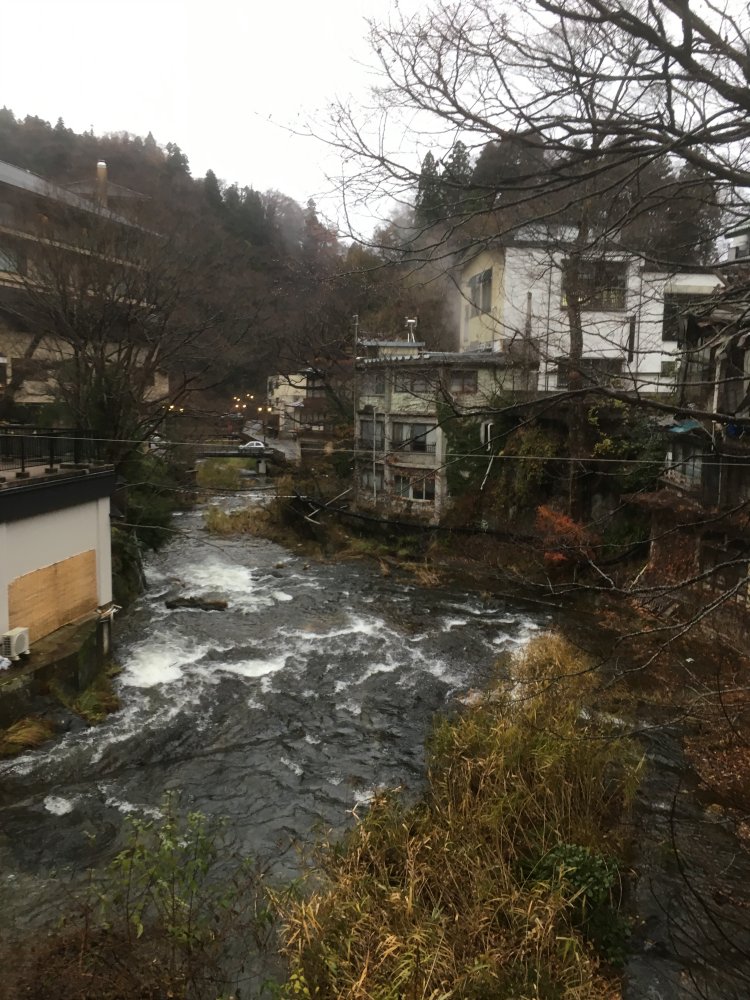
View of Higashiyama Onsen. The Onsen ryokans are mainly located along the river.
I enjoyed the sake I had bought in Kitakata at the onsen ryokan. The karakuchi
(dry) junmai Yauemon of Yamatogawa Brewery was indeed dry and good value
for money.
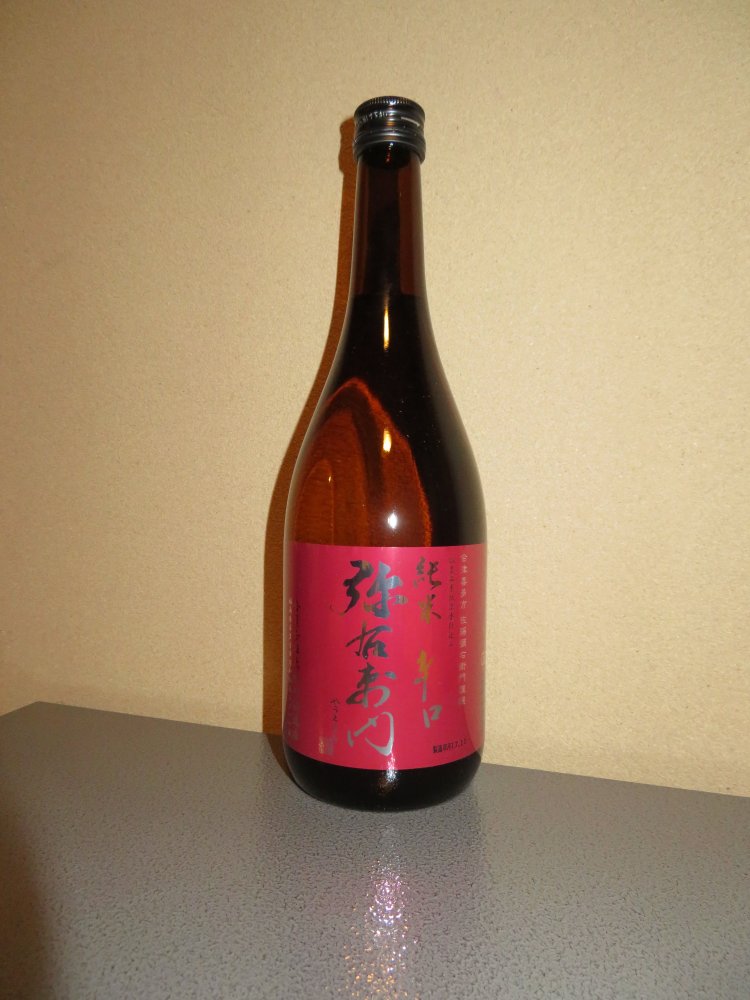
The karakuchi (dry) junmai Yauemon of Yamatogawa Brewery was indeed dry and good value for money.